Introduction
High mutation rate of RNA-containing viruses and rapid
rearrangements of viral quasi species cause their resistance to available
drugs. Innovations and implementations of new antiviral medications
remain insufficient. Despite widely used inactivated and subunit vaccines
against influenza as well as highly specific and sensitive diagnostics the
influenza annual outbreaks remain public health concern [1,2]. Resistance
of the Influenza virus to known drugs may inspire a search of new
molecular targets for recommended combined therapy. Main criteria for
anti-viral drugs should include a selective inactivation of certain viruses,
a minimal possible influence on host cellular biopolymers, a prolonged
action to avoid multiple frequent administrations as well as should take
into consideration both innate resistance and immunity status of patients.
Nucleoside analogs are competitive inhibitors of both viral and cellular
enzymes and consequently are toxic. Non-nucleoside inhibitors of viral
proteases, reverse transcriptases, integrases, and neuraminidase of
Influenza virus are more specific and, therefore, less harmful compared
to nucleoside derivatives. High molecular weight proteins such as specific
immunoglobulins and RNases are not known to be able to penetrate into
both host cells and enveloped viruses and therefore currently excluded
from a consideration as potential specific anti-viral medications.
The ubiquitous RNases in body fluids varying in a range from 12.3-
13.7 kDa for human urine to 45 kDa for serum RNase and 150 kDa for its
aggregates hampered to assign a role for these enzymes. Protective role of
RNase in milk against retroviral infection has been envisaged [1]. RNAcontaining
Orthomyxoviruses seem to be sensitive to the elevated levels
of RNases in blood [2]. Therefore, a research of artificial RNases with low
molecular weights providing possible penetration into virions and into
infected cells are promising directions of anti-viral drug development
during the last 20 years.
Currently known unspecific artificial RNases include both metal-free
compounds and complexes of transition metals Cu2+ [3], Zn2+ [4], Ln3+ [5],
Eu3+ [6] with organic ligands, biogenic amines [7], some peptides [8,9]
and other low molecular weight organic compounds [10-12] capable to
cleave phosphodiester bonds of certain dinucleotides (CpA and UpA
motifs). Site-specific artificial ribonucleases are based on antisense
oligonucleotides [13] and ribozymes and, therefore, capable to cleave
specific sequences [14-16]. Despite successful inactivation of viruses
by using specific [17] or unspecific [18] artificial RNases in vitro their
penetration into eukaryotic cells and stability remain essential problems
hampering their implementation.
Our aim was to study antiviral properties and toxicity of a novel
complex of Ag (I) with cystine.
Materials and Methods
Tissue cultures
Madin-Darby Canine Kidney (MDCK) epithelial cells, mouse
subcutaneous connective tissue L929, green monkey kidney Vero cells
and porcine embryo kidney PS cells were obtained from the Russian
State Tissue Culture Collection (D.I. Ivanovsky Institute of Virology of
the Federal Research Center of Epidemiology and Microbiology of N.F.
Gamaleya of the Russian Ministry of Health, Moscow, Russia) and grown
in Eagle minimal essential medium (EMEM) supplemented with 10%
fetal bovine serum (HyClone, “Thermo Scientific”, USA) in the presence
of 100 U/ml penicillin and 100 U/ml streptomycin.
Viruses
Influeza A virus of subtypes H1N1 (strain A/swine Iowa 15/30) and
H3N2 (strain A/Aichi/1/68) were from the Russian State Collection
of Viruses (D.I. Ivanovsky Institute of Virology of the Federal Research
Center of Epidemiology and Microbiology of N.F. Gamaleya of the
Russian Ministry of Health, Moscow, Russia).
Antiviral drugs
Water-soluble silver (I) complex with cystine Li+[Ag+ 2 Cys2 - (OH- )2 (NH3 )2 ] (АС-1) had been synthesized as earlier described [19]. In brief, the silver-cistine compound was prepared at room temperature by mixing cistine, lithium hydroxide, silver nitrate and ammonia in a molar ratio of 1:2:2:8. The reaction mixture was stirred at room temperature for 6 hours, and then evaporated at 40-50°C in vacuum up to 1/4 of the initial volume. After addition of ethanol the mixture was cooled and incubated at +4- +6°C for 12 hours. The resulting water-soluble yellow fine precipitate was filtered, washed with ethanol and dried.
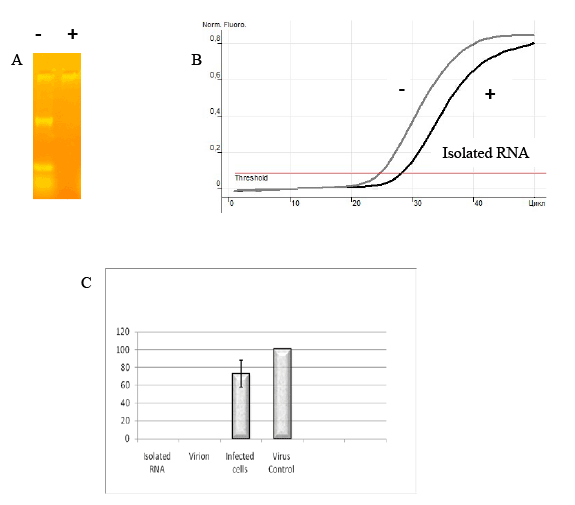
Figure 1: Cleavage of total RNA (A) and the influenza A virus RNA (parts B and C) after incubation with 2 mM AC-1 at 37ºC.
A- Electrophoregram of total isolated RNA before (lane “-”) and after (lane “+”) incubation with AC-1 in SDS-2% agarose-TAE gel with subsequent
ethidium bromide staining.
B- Results of reverse transcription with subsequent real time PCR with Syber Green I of the influenza virus RNA before (lane “-”) and after (lane
“+”) incubation of the influenza virus-infected MDCK cells with AC-1.
C- Diagram of the viral RNA cleavage in virions and infected cells compared to isolated RNA (left, as a positive control of RNase activity of AC-1)
and RNA without incubation with AC-1 (right, negative control).
RNA isolation
Total RNA were isolated from control MDCK cells and those infected
with the Influenza virus A (H3N2 or H1N1) by lysis in guanidine
isothiocyanate, phenol-chloroform deproteinization with subsequent
alcohol precipitation [20]. Isolated RNA before and after incubation
with AC-1 was analyzed by electrophoresis in SDS-agarose gels with
subsequent ethidium bromide staining.
Cleavage of nucleic acids
AC-1 was dissolved in RNase-free sterile tridistillated water. The isolated
total RNA (5-10 µg in 5 µl) was incubated with 5 µl AC-1 solutions at 37°C
for 1 h. Then reaction products were assayed in reverse transcription with
random N6 primers (“AmpliSens”, Moscow, Russia) with subsequent realtime
PCR with SyberGreen I and primers specific to the Influenza A virus
(A/Aichi/2/1968(H3N2)) hemagglutinin gene (GenBank (http://www.
ncbi.nlm.nih.gov) accession number J02090)
InAA-F 5’- TCTGTCTGGCTCTCGGCC -3’ and
InAA-R 5’- GATTGTTGCATATTTTCCCCG-3’ synthesized in
“Syntol”, Moscow, Russia.
ELISA
The Influenza virus antigens were revealed in hemagglutination and
hemagglutination inhibition tests, as well as in semi-quantitative ELISA
with immobilized polyclonal antibodies, secondary antibodies against
mouse IgG with horseradish peroxidase with subsequent staining with
orthophenylendiamine [21]. Immunoascitic fluid was used as a positive
control and PBS as a negative control.
Washed human erythrocytes (blood group O) were used at a
concentration of 0.75%. The lowest virus (A/Aichi 1/68) concentration
that agglutinated erythrocytes was determined after 60 min [22].
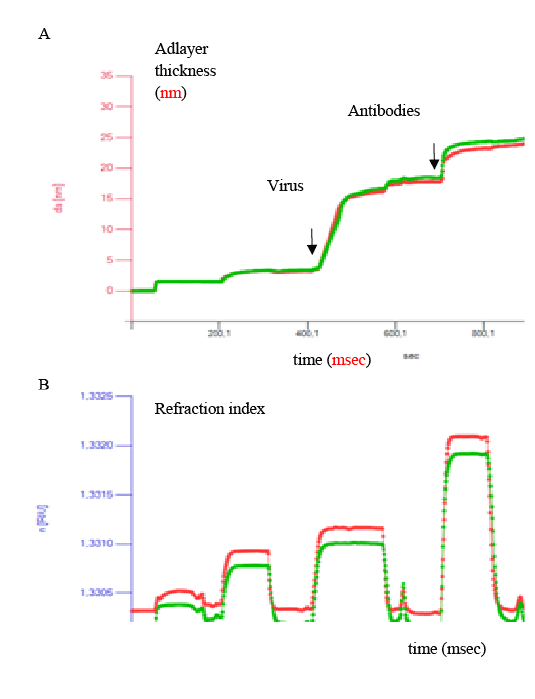
Figure 2: Conformational stability of the influenza virus antigens.
Results of the label-free real time optical detection of binding of the influenza A virus before (green curve) and after incubation with 16 mM AC-1 (red
curve) with the specific mouse polyclonal antibodies. Arrows show stages of subsequent addition of the influenza A virus (left arrow) and the virusspecific
polyclonal antibodies (right arrow). Coincidence of 2 curves of optical detection of binding of the virus antigen with the corresponding antibodies
proves the stable native conformation of the viral proteins after incubation with AC-1.
A- Changes of ad layer thickness after subsequent addition of pAA, glutaraldehyde, the influenza A virus [before (green curve) and after incubation
with 16 mM AC-1 (red curve)] and the virus-specific antibodies.
B- Corresponding changes of refraction indexes in the same time range (msec).
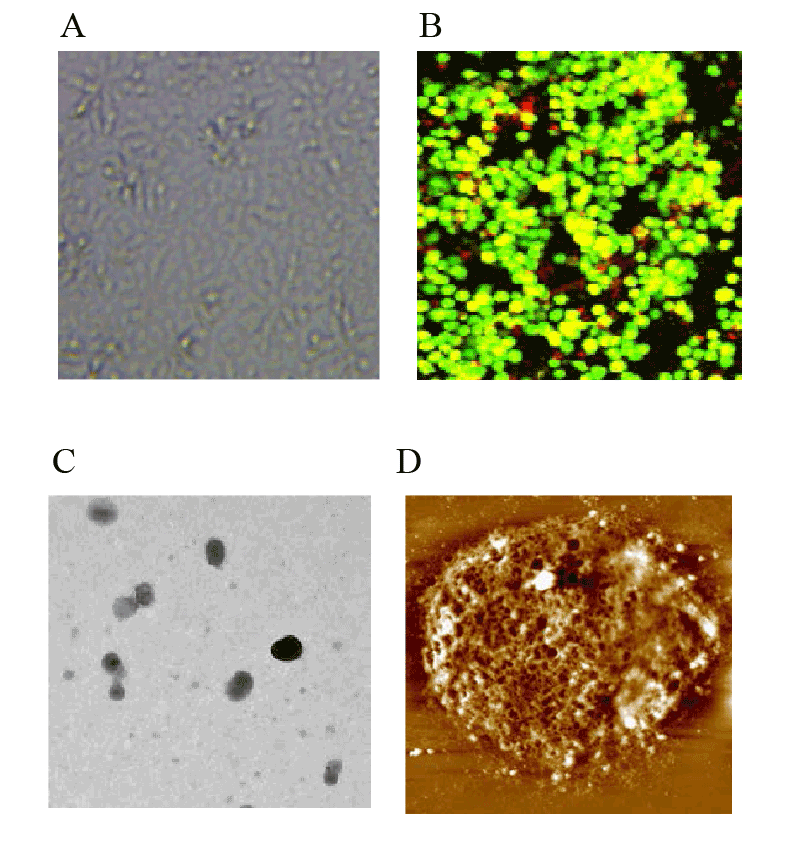
Figure 3: Native conformation and viability of MDCK cells and influenza A/Aichi 1/68 on the surfaces modified with 0.1 mg/ml pAA65 and 0.1% GA.
A- Staining of the immobilized MDCK cells with trepane blue dye.
B- Staining of immobilized MDCK cells with fluorescent dyes “Live and Dead” (“Molecular Probes”, “Life technologies”, USA).
C- Transmission electron microscopy of the isolated influenza virus A/Aichi 1/68.
D- Atomic force microscopy of the MDCK cell infected with influenza A/Aichi 1/68.
Real time optical detection
Photonic crystal (PC) [23-25] (http://pcbiosensors.com) was sonicated
in isopropanol and water and treated in plasma cleaner. All further
procedures were performed while PC was mounted to the flow cell of
the Biosensor EVA 2.0 (http://pcbiosensors.com). The baseline (the
thickness and refraction index) was registered in the running buffer at
the beginning of all measurements. The clean PC was rinsed by 0.1 mg/ml
polyallylamine (pAA) 65. After washing to remove an unbound pAA65
with water 0.1% fresh glutaraldehyde was added for further binding with
primary NH2
-groups of proteins. Modification of the PC surface was
controlled in real time and continued for less than 1 min at each stage.
After the baseline stabilization, a PC was exposed to subsequent solutions
of proteins or AC-1 as well as cellular or the Influenza virus suspensions as
described in results and shown on figures.
Morphology of the eukaryotic cells onto aminated PS was controlled by
staining with trepane blue according to [22].
Atomic force microscopy (AFM)
Samples were analyzed by using atomic force microscope “Integra
Prima” (NT-MDT, Russia). All the AFM observations were performed with
high-resolution silicon cantilevers (Nanotuning, Russia) with resonance
frequencies from 190 to 325 kHz. Free amplitude of the cantilever in the
air was in the range of 1-10 nm.
Transmission electron microscopy (TEM)
Morphology of the Influenza A virions were examined using
transmission electron microscope JEM-2100 (JEOL, Japan) at
magnifications varying from 8,000x to 20,000x.
Cytotoxicity
Subsequent 10 times dilutions of 20 mM solution AC-1 was added onto
confluent monolayers of MDCK, L929,Vero and PS cells in duplicate or
quadruplicate in sterile 48- or 96-well tissue culture plates. Last readings
for cytopathic effect (CPE) formation were made when no further
progression of cellular degradation was evident in the titration for at least
two subsequent days. To estimate toxicity two methods were used:
1) MTT and 2) biosensor-based optical detection in real time.
MTT test: Tissue cultures PS, Vero and L929 were grown in 48-well or
96-well plates in culture mediums with or without different concentrations
of the tested substance AC-1 in the presence of 10% fetal bovine serum
up to confluent monolayers in control wells without any additions.
After washing three times with the sterile PBS MTT solution was added
until final concentration 0.5 mg/ml and the plates were incubated for 3
hours at 37°
C. Then MTT solution was removed from wells and 100 µl
dimethylsulfoxide (DMSO) to dissolve MTT crystal was added. Optical
densities were measured at 570 nm and background - at 630 nm by using
the plate immunoreader “Uniscan” (“Picon”, Russia).
The biosensor-based optical detection in real time was performed as
described above (section 2.7).
Toxicity for mice
AC-1 was diluted in sterile tridistilled water at 5 concentrations:
160 mM, 20 mM, 2 mM, 0.2 mM and 0.02 mM immediately before
experiments. The fresh solutions were administered into adult ICR mice
16-18 g in 3 different ways:
- Peroral administrations of 25 µl 160 mM solution AC-1 5 times each
day with intervals 1 day between administrations;
- Intranasal administration of 50 µl per mouse of 20 mM, 2 mM, 0.2 mM
and 0.02 mM solutions of AC 1;
- Subcutaneous injections of 100 µl per mouse of 20 mM, 2 mM, 0.2 mM
and 0.02 mM solutions of AC 1.
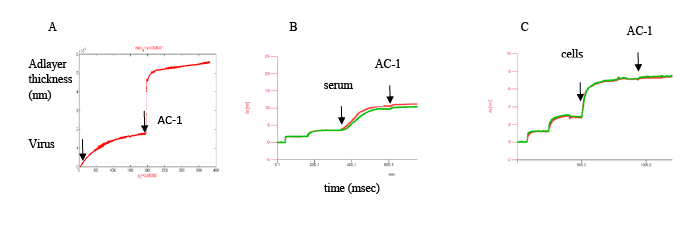
Figure 4: Real time optical detection of binding of the influenza A virus, mouse serum and MDCK cells immobilized onto one-dimensional photonic
crystal surface with 160 mM AC-1.
A- The influenza virus;
B- Mouse serum (1:100);
C- MDCK cells.
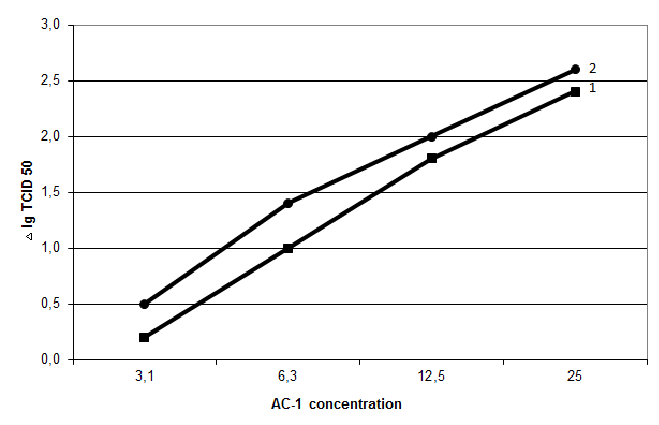
Figure 5: Differences in lg TCID50 between the influenza virus control
titers and those in the presence of various concentrations of AC-1 added
before (2) or after (1) infection of MDCK cells.
Toxicity of AC-1 for mice was estimated on base of lethality as well as
external signs such as body mass reduction, inflammation, physical activity,
adequate behavior, absence of tremor, paresis, spasms and convulsions
compared to control animals during 20 days after AC-1 administrations.
Maximal nontoxic doses corresponded to ½ dose of AC-1 which did not
cause noticeable consequences on organism and behavior of mice.
Infection of MDCK cells with the influenza virus A
Monolayers of MDCK cells were infected with the influenza virus A/
Aichi/1/68 in serum-free medium in the presence of 5 µg/ml trypsine
according to [26]. To determine the infectious titers of the influenza A
virus the subsequent 10-times dilutions of the virus suspensions from
the mouse lungs were added to monolayers of the washed cells (4 wells
per each dilution). After incubation of the infected cells for 24 hours at
370
C the virus was detected using hemagglutination test with human
erythrocytes (blood group 0) [22], the viral antigens – in ELISA [21] and
the Influenza A virus RNA - by means of reverse transcription with real
time PCR. Half maximal tissue culture infectious doses (TCID50) were
determined from quadruplicate repeats.
Multiplicity of infection (MOI) used for further in vitro experiments
was 0.1.
Infection of ICR mice
Mice ICR (males, 10-12 g) were intranasally infected under light ether
anaesthesia with 50 µl of the influenza A/Aichi 1/68 virus adapted to the
mouse lungs (10 lethal dose LD50) [27].The infected mice were observed
for 20 days postinfection. Protection coefficient (k) and protection indexes
(PI) were calculated according to following formula.
$$\eqalign{
& k = {{{\rm{\% }}\,{\rm{ died}}\,{\rm{ in}}\,{\rm{ a}}\,{\rm{ control}}\,{\rm{ group }}} \over {{\rm{\% }}\,{\rm{died}}\,{\rm{ in }}\,{\rm{an }}\,{\rm{experimental}}\,{\rm{ group }}}} \cr
& \cr} $$
$$Pl\, = {{{\rm{k - 1}}} \over {{\rm{ k}}}} \times 100\% $$
Average life span was counted as the following
$${\rm{1/}}\tau = {{{X_1}/{t_1} + {X_2}/{t_2}/{X_3}/{t_3} + {X_4}/{t_4} + ... + Xa/ta} \over n}$$
Where t1
, t2
,………ta
- day of death of a mouse after infection with the
Influenza virus;
Х – Amount of lethal outcomes of the virus-infected mice in that day;
n - Total amount of experimental animals per a group.
Antiviral properties in vitro
MDCK cells were propogared in EMEM with 10% fetal bovine serum
until confluent monolayer. Freshly prepared AC-1 solutions of various
concentrations were added to wells in 2 hours before or after the infection
of the MDCK with the Influenza A virus H3N2 (strain A/Aichi/1/68).
Microscopic observations of CPE caused by the viral infection continued
during 48 hours.
Antiviral properties in vivo
To study antiviral properties in adult laboratory mice the freshly
prepared AC-1 solutions of different concentrations were administered
perorally. Both single and multiple administrations according to
prophylactic and therapeutic schemes were performed. The treated and
infected with the influenza virus mice were observed for 21 days post
infection.
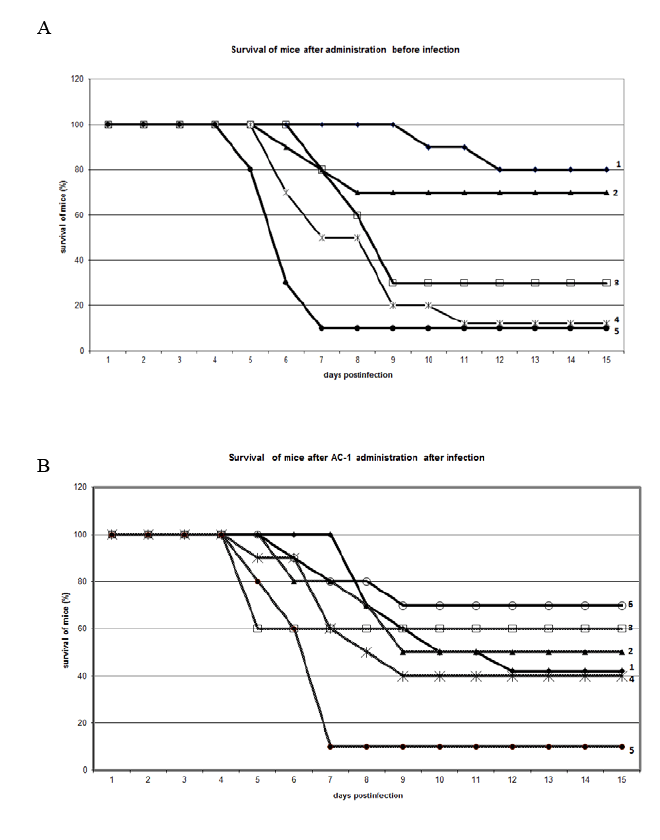
Figure 6: Survival of mice after AC-1 peroral administrations 5 times
before (part A) and after (part B) the intranasal infection with the
influenza A virus A/Aichi/1/68.
1- 160 mM AC-1;
2- 16 mM AC-1;
3- 1.6 mM AC-1;
4- 0.16 mM AC-1;
5- The virus control;
6- Tami flu.
Statistical analysis
Continuous variables were compared using Student’s t-test [28]. P
<0.05 was assumed to be significant.
Results and Discussion
Synthesis of AC-1
Li
+[Ag+
2
Cys2
-
(OH-
)2
(NH3
)2
] (short name AC-1) was designed as a low
toxic silver complex and a potential nuclease and synthesized as previously
described [19]. Structure of AC-1 was confirmed by means of IR, UV,
NMR (including 109Ag NMR) spectroscopy shown in Supplementary
materials and data of element analysis [19].
RNA cleavage
Complete cleavage of any isolated RNA was revealed after its incubation
with 2 mM AC-1 for 1 hour at 37ºC (Figure 1). For full degradation
of the Influenza virus RNA within extracellular virions 2 hours were
required (Figure 1). However, the AC-1-mediated RNA cleavage inside
infected cells was not exhaustive (Figure 1). Neither cellular DNA nor
viral antigens (Figure 2) were damaged after incubation with AC-1.
Discrepancy between complete degradation of the viral RNA in virions
and partial cleavage inside infected cells might be caused by the AC-1
penetration into virions but only partly in cells and stoichiometric ratios.
Taken together, the data suggested a possible inactivation of the influenza
virus without its antigen damages for an inactivated vaccine preparation
or for preventive treatment at the early stage of infection.
Optical detection of binding of AC-1 with Influenza virus,
cellular and blood serum proteins
Conformational stability of the viral antigens was controlled by semiquantitative
ELISA, hemagglutination tests and optical detection of their
binding with the virus-specific antibodies before and after treatment
with AC-1 (Figure 2). Stable morphology and viability of both host cells
and virions on aminated surfaces were confirmed by the staining with
trepane blue and fluorescent dyes, as well as by using the atomic force, the
transmission electron and the fluorescent microscopy (Figure 3).
Permanent binding of AC-1 with the Influenza virus (Figure 4A), a weak
binding with mouse sera (Figure 4B) and the absence of any detectable
interaction with immobilized MDCK cells (Figure 4C) suggested its
potential antiviral properties and a limited toxicity.
Toxicity
Cytotoxicity of AC-1 for different tissue cultures was shown to vary
(Table 1). Its toxicity for mice appeared to depend on the administration
routes. Peroral administrations were less harmful compared to other ways
and didn’t cause any observed disturbances. Intranasal administration of
both 20 and 2 mM AC-1 caused lethal outcomes. A single subcutaneous
injection of 160 mM or 20 mM AC-1 caused tremor, refusal to eat,
adynamia and fatal outcomes whereas lower doses beginning from 16 mM
did not result in any damages. The discrepancies might be explained by
the accumulation of AC-1 in lungs and stomach. The absence of binding
of AC-1 with the cellular and serum proteins (Figure 4) fitted with its
limited toxicity both in vitro and in vivo (Table 1).

Table 1: Toxicity of AC-1 for tissue cultures of different origin and mice after
different administration routes
a
CC50: concentration of AC-1 (mM) that caused 50% cyto toxicity of
eukaryotic cells
b
Concentration of AC-1 (mM) that did not result in detectable damage of
mice.
Antiviral properties of AC-1
RNA is known to be the genetic material of many pathogenic viruses
so artificial RNases might serve as antiviral drugs as was shown for nonenveloped
RNA-containing viruses [2, 18]. However, penetration of
RNases into enveloped RNA-containing viruses is hampered by both lipids
and viral encapsidation proteins. All our attempts to inhibit Flaviviruses
with AC-1 were unsuccessful (data not shown) despite available data
about other artificial RNases [29].
The Influenza virus is known to be the most sensitive to RNases [2].
Antiviral properties of AC-1 in vitro (Figure 5) and in vivo (Figure 6 and
Table 2) essentially coincided and proved incomplete inactivation of the
influenza virus. The highest PI and an average life span were observed
after daily peroral administration of 160 mM AC-1 5 times before the
virus infection (Table 2 and Figure 6).
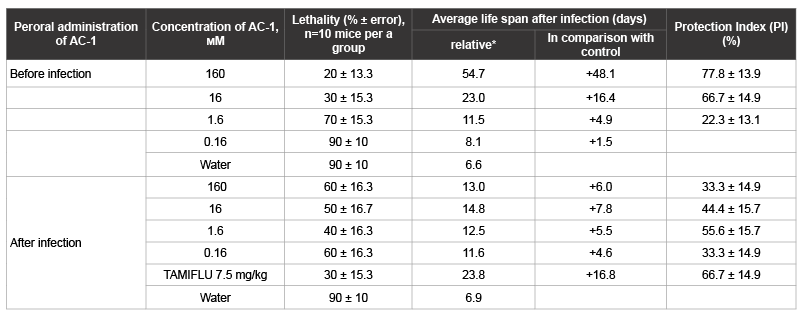
Table 2: Antiviral properties of АС-1 against the influenza virus A/Aichi/1/68 in vivo after its multiple peroral administrations

Table 3: Infectious titers of the influenza A virus in mouse lungs.
Infectious titers of the Influenza virus A (in lg TCID50) in lungs of mice
after the multiple peroral administrations of the AC-1 were lower than
in control group (Table 3) proving only partial inactivation of the virus
inside infected cells in accordance with Figure 1.
Taking into consideration new molecular target, low toxicity after
peroral administrations and evident anti-Influenza virus properties the
novel low-molecular-weight AC-1 without immunogenic and allergenic
activities might be used for an inactivated vaccine preparation and for
combined therapy of the influenza.
Conflict of interest
None










